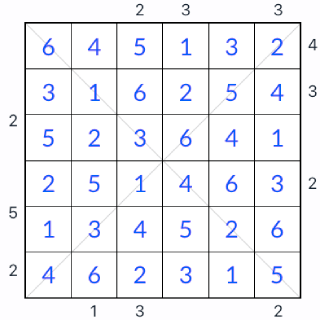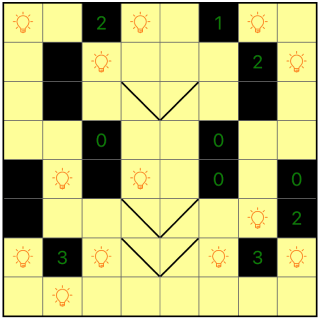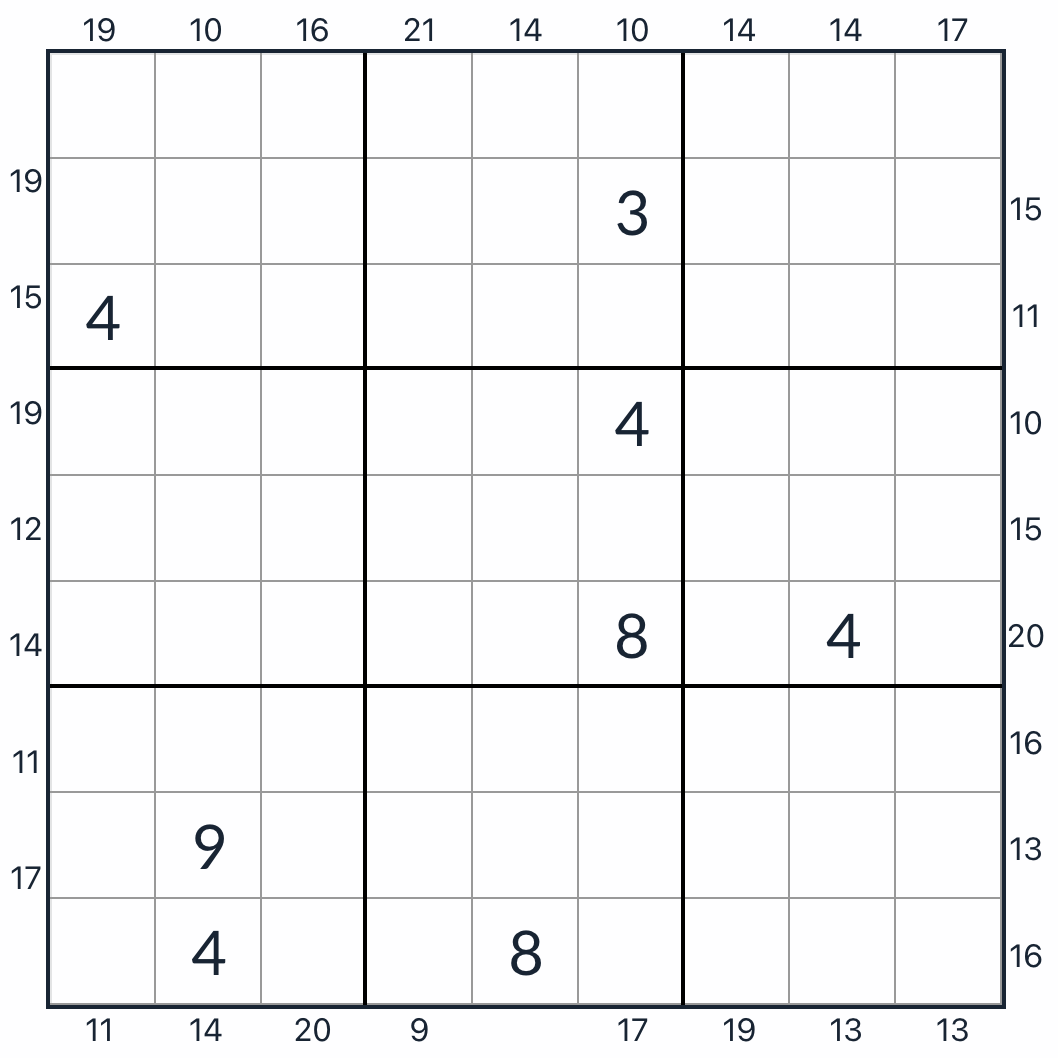Diagonal Consecutive Sudoku Medium
Like this puzzle!
1
9
6
8
2
8
5
3
1
7
6
4
3
6
5
3
8
7
6
2
9
5
9
4
5
3
7
2
1
7
8
9
1
2
3
4
5
6
7
8
9
?
~
123
1
2
3
Helping solve
Undo
Redo
Delete
0
Hint
Latest score list for #odk70
se
semrush a second ago
19'13''
Wo
Workers 7 minutes ago
11'7''
re
recovery 36 minutes ago
4'33''
mo
motivation 23 minutes ago
8'57''
fa
family 47 minutes ago
14'37''
gu
guest 22 minutes ago
17'24''
wo
workforce an hour ago
14'4''
gu
guest an hour ago
4'37''
re
refinancing an hour ago
16'0''
sa
sandwich an hour ago
7'16''
Latest score list for Diagonal Consecutive Sudoku
an
anonymous solved puzzle No#lm9qg;
13'49''
ph
phone solved puzzle No#lqrvg;
18'2''
cr
crackstreams solved puzzle No#ov8kl;
16'58''
Do
Donate solved puzzle No#lg97v;
17'54''
an
anonymous solved puzzle No#lz60e;
19'45''
Ja
James solved puzzle No#o6en3;
4'26''
an
anonymous solved puzzle No#l4wx4;
13'20''
me
medical solved puzzle No#3ek04;
17'31''
gu
guest solved puzzle No#3n499;
18'3''
te
teriyaki solved puzzle No#l5jm9;
7'13''
How to play Diagonal Consecutive Sudoku
Diagonal Consecutive Sudoku Rules
Consecutive Sudoku: Standard Sudoku rules apply (1-9 in each row, column, and box) with the added twist of bars between some squares. These bars mean the numbers in those squares must be consecutive (differ by 1).
Diagonal Consecutive Sudoku Additional Rules:
-
Diagonal Sudoku Rule: Sudoku main diagonals also contain the digits 1 through 9.
Read more: Diagonal Consecutive Sudoku rule & tips
Using the Markings:
Pay close attention to the consecutive markers while placing numbers. If two cells are connected by a bar, the numbers you place in them must differ by exactly 1.
Conversely, if there's no marking between two cells, the numbers in those cells cannot be consecutive.
Diagonal Consecutive Sudoku = Diagonal Sudoku + Consecutive Sudoku.
Privacy Policy Copyright Gridpuzzle © 2024



























